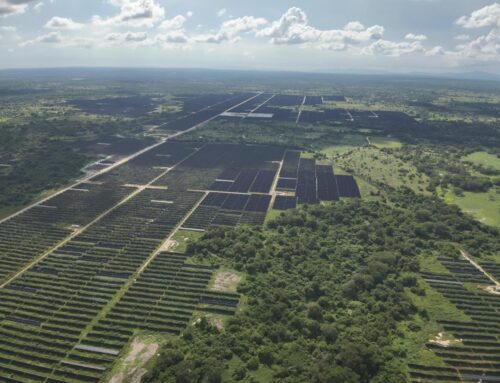What The Spanish Blackout Says About Renewable Energy In The U.S.
June 8, 2025
Like most Americans, with the exception of a soccer match every now and then, I could give a flying handshake about what’s happening day-to-day on the Iberian Peninsula. However, the recent blackout, which shut off power to over 55 million people in three countries within five seconds, caught my attention for its implications for the future of renewable energy in the U.S.
Renewables promise ample electricity with a low carbon footprint and a low price point, especially compared to coal, so it is no wonder that wind and solar have seen such a huge growth in capacity over the last generation.
Critics of renewables will rightly point out that renewables are cheap as long as battery storage is not included in their price, and the sudden collapse of an entire electric grid for 12 hours incurs a staggering economic burden that should be priced into cost calculations.
Supporters of renewables argue that the problem is not renewables themselves, but insufficient or outdated control, distribution and storage equipment on the grid. If we spend more money on storage and transmission, everything will be hunky-dory.
My intuition was that both arguments held water. Critics are right to include the cost of storage to the low cost of renewables because electricity is an on-demand commodity–it must be there even when the sun is not shining and the wind is not blowing. That said, supporters are right that including the long-term cost of further unbalancing the planet’s natural carbon cycle, the “low” cost of continued fossil fuel consumption is an illusion.
Since the blackout, which occurred at the end of April, I’ve been speaking with Dr. Lorenzo Kristov, one of the world’s top experts on grid architecture, and combing through reams of articles on power engineering.
I concluded that both critics and supporters of renewable energy are wrong.
Both sides are trying to fix current problems with the same mindset that created the problems in the first place: Industrial Revolution thinking.
The Industrial Revolution paradigm centralizes production and relies upon long and ultimately fragile supply and distribution chains that are vulnerable to changes in environmental factors. As we head deeper into the post-Climate era, long supply and distribution chains will inevitably face accelerating disruption.
Nearly 90% of natural gas processing, fractionation, and storage is concentrated in four regions in the U.S., each subject to various environmental hazards that will incur greater complications and costs as climate change exacerbates natural disasters’ frequency and severity. Although concentrating gas production in these areas is efficient (the ultimate goal of the Industrial Revolution paradigm), it results in long, fragile supply and distribution chains.
Similarly, building enormous solar and wind farms deep in flyover country necessitates enormous expenditures on fancy new storage equipment and mechanical devices to manage voltage and grid frequency, and new high-voltage DC transmission lines. All this spending creates exactly the same sort of fragile supply and distribution chains we see in natural gas. Indeed, the root cause of the Iberian grid’s failure on a clear, windy day when 70% of Spain’s generation capacity was coming from renewables was the Spanish grid’s inability to gracefully handle such a surplus of renewables generation.
Modern-day grids are trying to cram the power train for a Tesla Roadster alongside the internal combustion drivetrain of a 1959 Edsel, then take this hybrid Frankencar off-roading.
It is time for a new paradigm.
Kristov and his colleagues have developed a paradigm that envisions individual towns and regions forming self-reliant mini-grids that can attach and detach from the larger grid network as needed. While this architecture would not have prevented the equipment failure that triggered the Iberian Blackout, it would have isolated the problem from the rest of the system, keeping the outage local rather than allowing it to proliferate nationwide.
This model upsets the way incumbents competing in electrical generation, transmission, and distribution have been doing business for the last 120 years. Challenging a network of longtime monopolies and their corresponding political structures is tough, even though it’s the right thing to do. We need renewable energy in the U.S. Intelligent investors take note.
Those interested in a detailed analysis of the causes of the Iberian Blackout and a plain-language explanation of modern grid function and management, please see my recently published research report.
Search
RECENT PRESS RELEASES
Related Post



